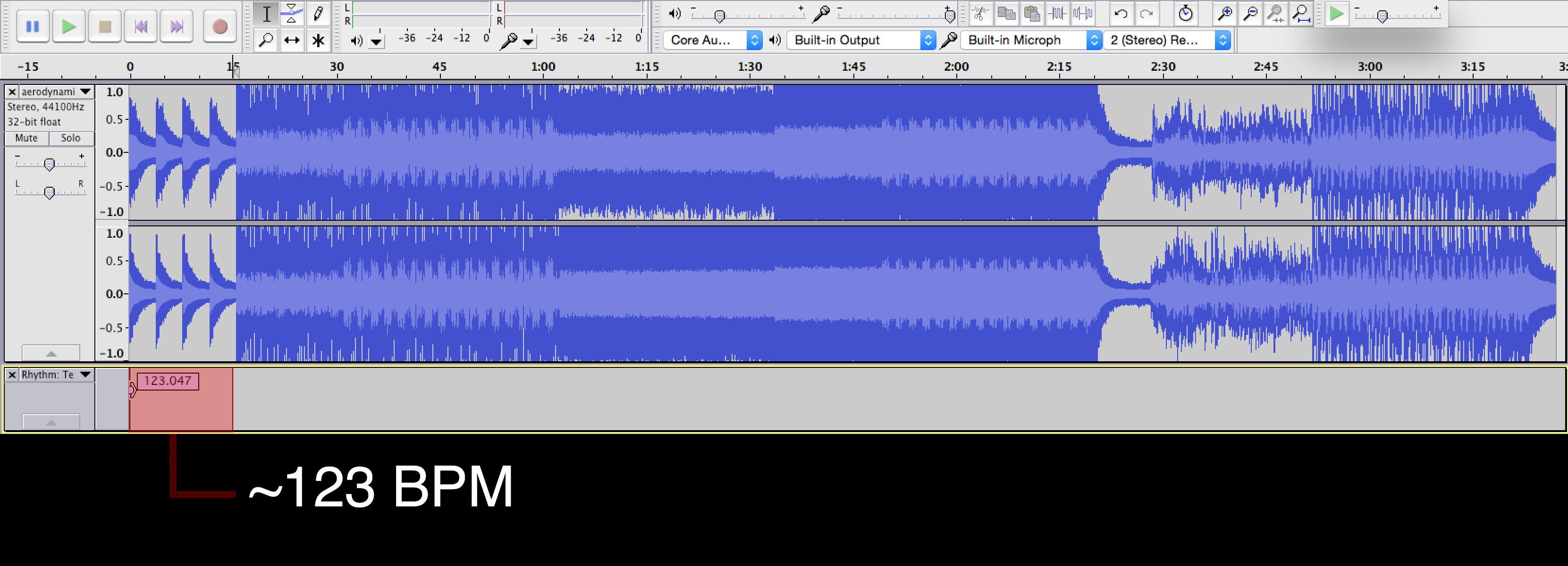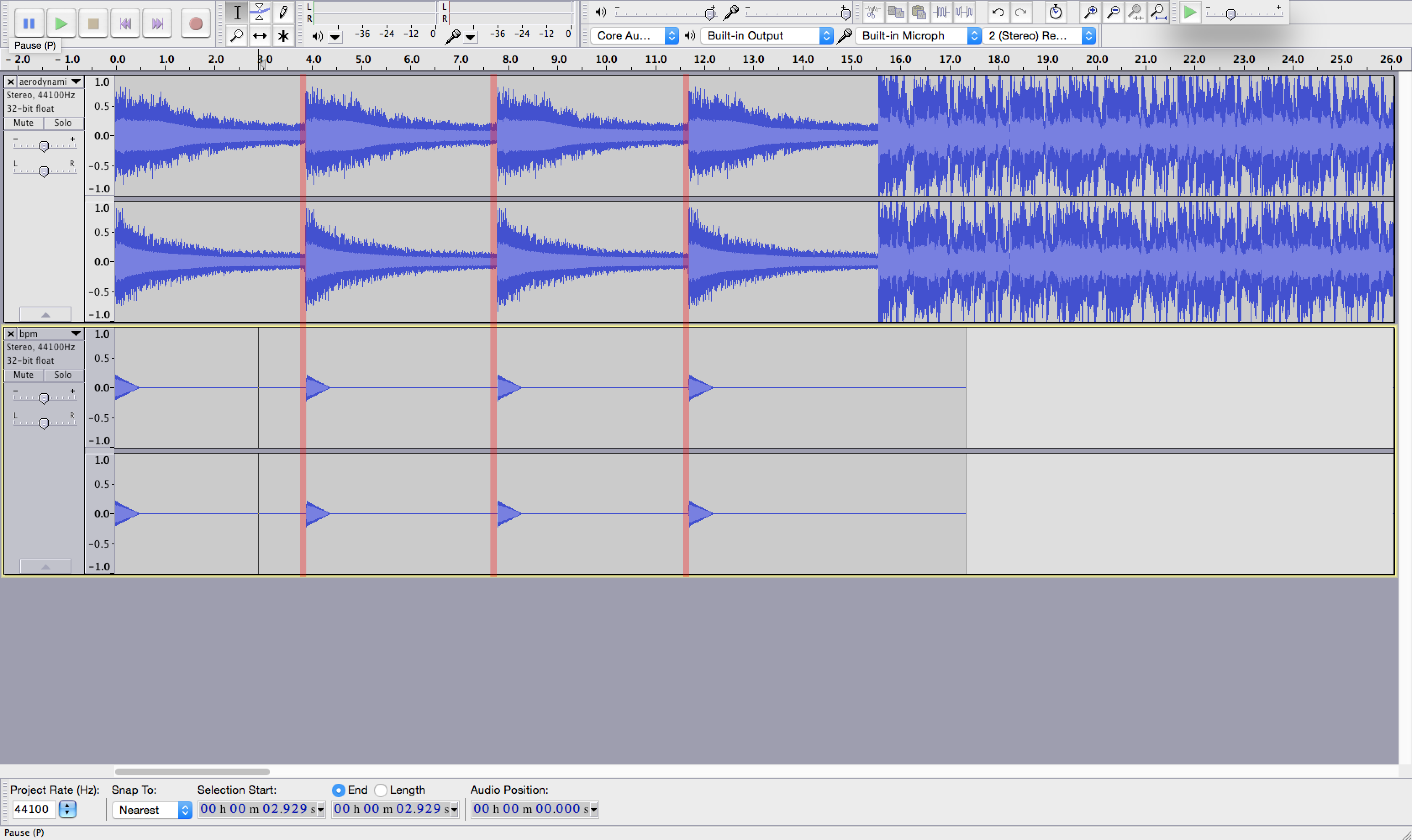Structure
This article is part of the Aerodynamic guide.
Before digging into the track, listen to it 3/4 times, and try to deduct the different parts and imagine how they are built.
Ready? Let’s continue!
Here’s what the track looks like once imported in Sonic Visualizer:

It is a common way to visualize a sound, in abscissa we have the time and in ordinate the volume. We see that the track’s length is about 3 minutes and 27 seconds, and that it is composed of the following parts:
bellsfunksolofunk/solooutro
This cut is somehow arbitrary and could be finer (for instance, the
second part funk is actually made of two parts which we can also see
on the picture). We are going to focus on the first 4 parts and forget
about the last, but before starting, we need to get some extra
information about the track.
The tempo
We need to know the tempo of the track, which we usually express in
terms of BPM, that is, the number of Beats Per
Minute. There are different ways to get this value, the
simplest one being to use a software which directly provides its
value, for instance, by importing the track in Audacity with the
Tempo and Beat Tracker plugin :

We can also compute it from the bells part of the track, which is
made of 4 strokes of a bell for a duration of 15'‘6: if we decide
that each stroke corresponds to 8 beats, we can deduce the BPM in the
way:
- one stroke is 15.6 / 4 = 3.9’,
- as one stroke is 8 beats, one beat is 3.9 / 8 = 0.4875'',
- as a result, in 60'', we have 60 / 0.4875 = 123, so the BPM is 123.
To be sure of this value, we are going to play 4 notes every 8 beats in Sonic Pi with a tempo of 123 BPM:
use_bpm 123
4.times do
play :C3
sleep 8
end
This is rather expressive, and it can be read this way:
- use a
BPMof 123 - do 4 times what is between
doandend(we call this a block) - inside the block, play the note
C3, then wait 8 beats
This looks like the original track from a rhythmic point of view (but not
on the accoustic side since we arbitrarily picked C3), to be sure of
this, we can compare this version with the original one in Audacity:

On the upper side we have the original (since it’s a stereo track, there is one line for the left ear, one line for the right ear), on the bottom side we have our version: it matches, we can continue!
This article is part of the Aerodynamic guide.